
Ha Long Bay: The Jewel of Vietnam
Discover Ha Long Bay, Vietnam's breathtaking bay with emerald waters, towering limestone islands, and rich cultural heritage. A must-visit UNESCO World Heritage Site.
Ha Long Bay, located in the northeastern region of Vietnam, is renowned for its emerald waters and thousands of towering limestone islands topped with rainforests. This UNESCO World Heritage Site spans over 1,500 square kilometers and is a paradise for nature lovers, photographers, and adventure seekers. Tourists visiting Ha Long Bay can explore the stunning karst formations, either by traditional junk boats or modern cruises. The bay is dotted with caves like Sung Sot Cave and Thien Cung Cave, which are adorned with impressive stalactites and stalagmites. Kayaking and swimming in the bay’s calm waters offer a closer perspective of its natural beauty. Beyond the natural wonders, Ha Long Bay is rich in culture and history. The floating fishing villages, where local communities have lived for generations, provide a unique glimpse into the traditional way of life. Visitors can interact with the locals, taste fresh seafood, and even learn how to fish using traditional methods.
Local tips in Ha Long Bay
- Visit during the dry season (October to April) for the best weather and clear skies.
- Book a cruise that includes a visit to the floating villages for an immersive cultural experience.
- Pack comfortable walking shoes for exploring the caves and islands.
- Try to go kayaking early in the morning to avoid the crowds and enjoy the serene beauty of the bay.
- Bring cash, as some local vendors and smaller boats may not accept credit cards.
Ha Long Bay: The Jewel of Vietnam
Ha Long Bay, located in the northeastern region of Vietnam, is renowned for its emerald waters and thousands of towering limestone islands topped with rainforests. This UNESCO World Heritage Site spans over 1,500 square kilometers and is a paradise for nature lovers, photographers, and adventure seekers. Tourists visiting Ha Long Bay can explore the stunning karst formations, either by traditional junk boats or modern cruises. The bay is dotted with caves like Sung Sot Cave and Thien Cung Cave, which are adorned with impressive stalactites and stalagmites. Kayaking and swimming in the bay’s calm waters offer a closer perspective of its natural beauty. Beyond the natural wonders, Ha Long Bay is rich in culture and history. The floating fishing villages, where local communities have lived for generations, provide a unique glimpse into the traditional way of life. Visitors can interact with the locals, taste fresh seafood, and even learn how to fish using traditional methods.
When is the best time to go to Ha Long Bay?
Iconic landmarks you can’t miss
Sun World Halong Complex
Experience the thrill of adventure at Sun World Halong Complex, where excitement meets the natural beauty of Halong Bay in Vietnam.
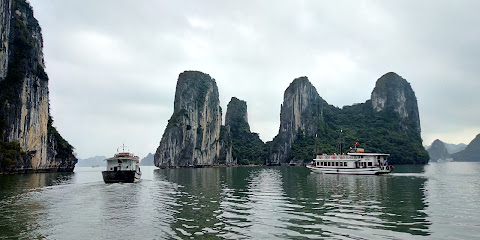
Bảo tàng Quảng Ninh
Discover the cultural and historical treasures of Quang Ninh at the captivating Quang Ninh Museum in Ha Long, Vietnam.
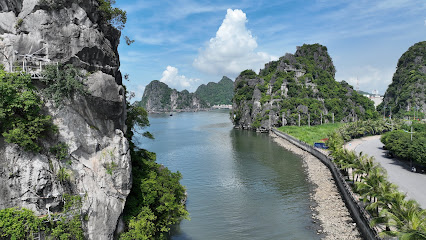
Sung Sot Cave
Explore the stunning Sung Sot Cave, a natural wonder in Ha Long Bay, featuring breathtaking formations and rich geological history.
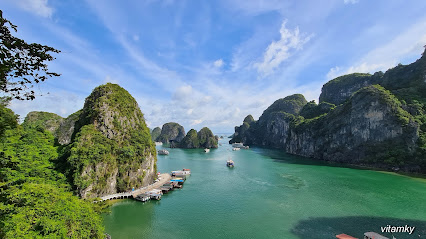
Hạ Long Bay
Explore the stunning beauty of Ha Long Bay, a UNESCO World Heritage site in Vietnam, known for its iconic limestone karsts and rich cultural experiences.

Cáp Treo Nữ Hoàng
Embark on a breathtaking journey with Cáp Treo Nữ Hoàng, the majestic cable car in Ha Long, Vietnam, offering stunning views and thrilling adventures.
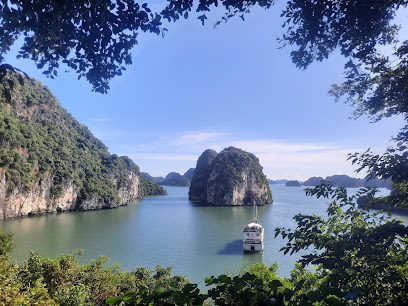
Ha Long Market
Explore Ha Long Market, a bustling hub of Vietnamese culture, cuisine, and crafts in the heart of Ha Long City, perfect for every traveler.

Bai Chay Beach
Experience the breathtaking beauty of Bai Chay Beach in Ha Long, Vietnam, where golden sands meet crystal-clear waters.
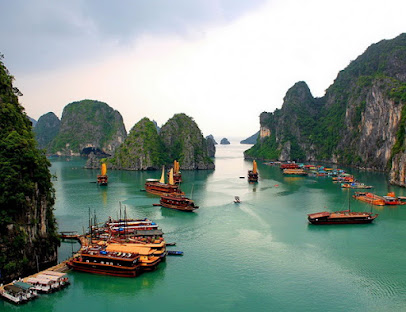
Ti Top Beach
Discover the serene beauty of Ti Top Beach in Hai Phong, Vietnam – a tropical paradise perfect for relaxation, adventure, and breathtaking views.
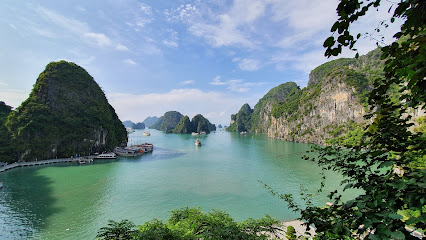
Sun World Halong Park
Discover thrills and breathtaking views at Sun World Halong Park, a premier amusement center in Vietnam, ideal for families and adventure seekers alike.

Stellar of the Seas
Explore the breathtaking beauty of Quảng Ninh with Stellar of the Seas, where luxury meets adventure on the stunning waters of Vietnam.
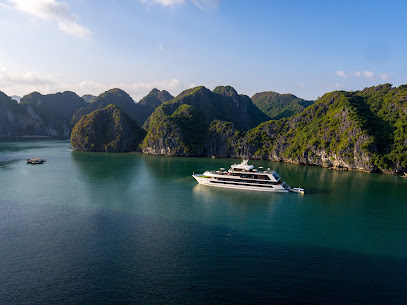
Hang Luồn
Explore Hang Luồn, a stunning natural attraction in Cát Hải, Vietnam, known for its breathtaking caves and exhilarating kayaking experiences.
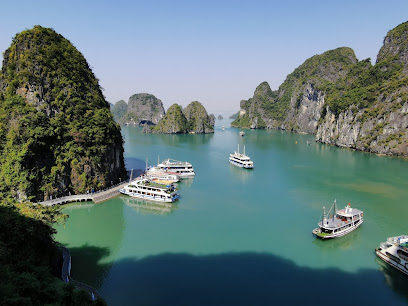
Bãi Cháy Market
Experience the vibrant culture and delicious flavors of Vietnam at Bãi Cháy Market, a must-visit destination in Ha Long City.

Dau Go Cave
Discover the enchanting Dau Go Cave in Hai Phong, Vietnam, a stunning natural attraction filled with awe-inspiring limestone formations and rich history.
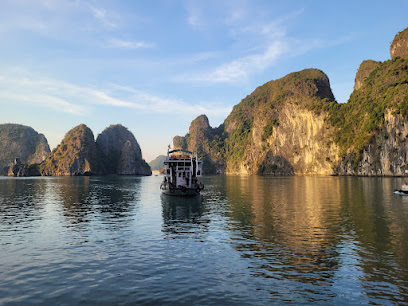
Long Tien Pagoda
Discover the serene beauty of Long Tien Pagoda, a must-visit Buddhist temple in Ha Long City, Vietnam, offering spiritual tranquility and stunning views.
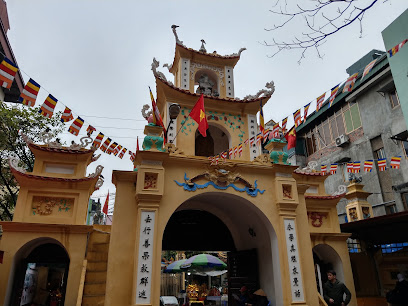
Poem Mountain
Discover breathtaking views and rich history at Poem Mountain, a must-visit attraction in Halong Bay, Vietnam, perfect for adventure seekers and nature lovers.

Unmissable attractions to see
Sun World Halong Complex
Discover the vibrant adventure and breathtaking beauty of Sun World Halong Complex, the perfect destination for thrill-seekers and culture enthusiasts alike.
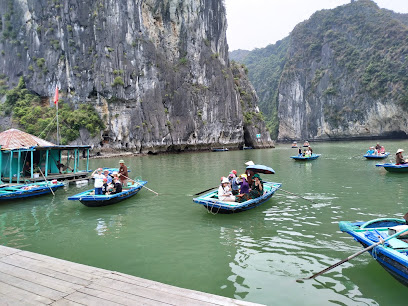
Relic scenic Yen Tu
Experience the tranquil beauty and spiritual significance of Yen Tu Mountain, a revered pilgrimage site in Vietnam's Quang Ninh province.
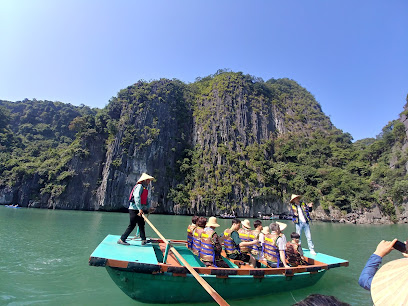
Halong Park (Dragon Park)
Discover the excitement of Halong Park (Dragon Park), an amusement park in Ha Long City, Vietnam, with thrilling rides and stunning views.
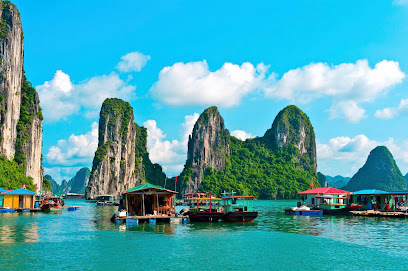
Valley Beach Club - beach
Discover the vibrant atmosphere of Valley Beach Club in Ha Long, Vietnam, where relaxation meets nightlife with stunning ocean views.
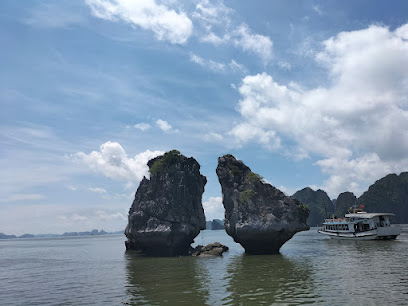
Ocean Park
Discover the enchanting beauty and exhilarating adventures at Ocean Park, a premier tourist attraction in Ha Long, Vietnam.
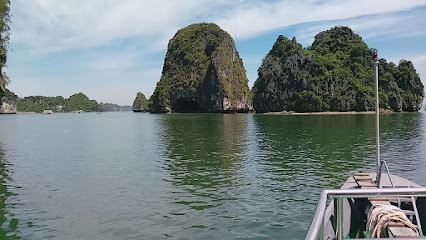
Indochina Junk (Halong bay cruise)
Explore the breathtaking beauty of Halong Bay with Indochina Junk, offering unforgettable cruises and exceptional service amidst stunning limestone landscapes.
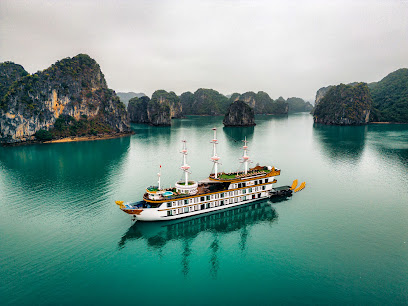
La Muse Cruise
Discover the breathtaking scenery and rich culture of Vietnam aboard La Muse Cruise in Ha Long Bay, an unforgettable journey awaits.
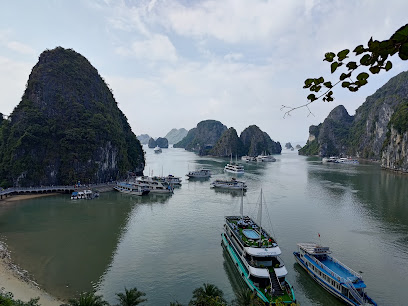
SUP HA LONG
Experience the breathtaking beauty of Ha Long Bay at SUP HA LONG, where adventure meets tranquility amidst stunning limestone formations.

Halong Bay Vietnam
Explore Halong Bay, a UNESCO World Heritage site, where emerald waters meet towering limestone islands for an unforgettable adventure.
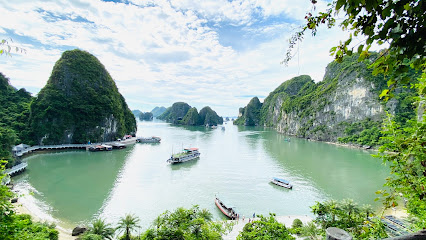
Cầu Koi
Explore the beauty and tranquility of Cầu Koi, a captivating bridge in Ha Long City, a perfect blend of nature and culture.

Bai Chay Lighthouse
Explore the stunning Bai Chay Lighthouse in Ha Long, Vietnam, where breathtaking views meet rich maritime history, perfect for all travelers.
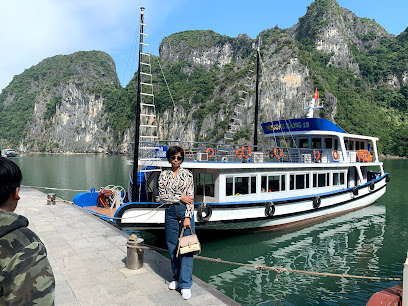
Victory Star Cruise
Explore the majestic beauty of Ha Long Bay with a luxurious cruise experience featuring stunning views, exquisite dining, and unforgettable adventures.
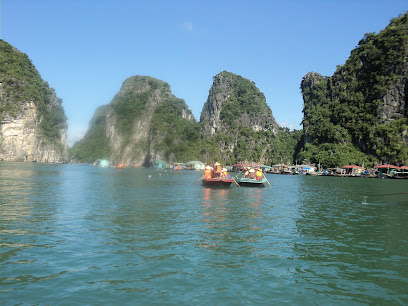
CÔNG TY DU LỊCH VỊNH HẠ LONG
Explore the stunning beauty of Ha Long Bay with Công Ty Du Lịch Vinh Ha Long, your gateway to adventure and culture in Vietnam's iconic landscape.
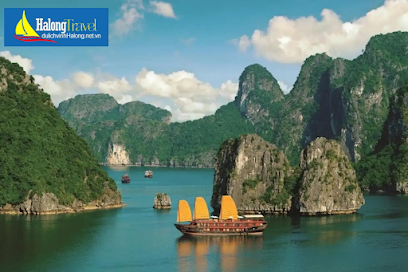
Halong View Tower
Discover breathtaking views of Halong Bay at Halong View Tower, a must-visit destination for travelers seeking stunning landscapes and unforgettable experiences.

Cầu Bài Thơ 2
Explore Cầu Bãi Thơ 2 in Hạ Long City: A breathtaking bridge offering stunning views and a vibrant atmosphere for unforgettable memories.

Essential places to dine
Nhà hàng Hồng Hạnh 3
Experience authentic Vietnamese cuisine at Nhà hàng Hồng Hạnh 3 in Bãi Cháy, with stunning views of Ha Long Bay.
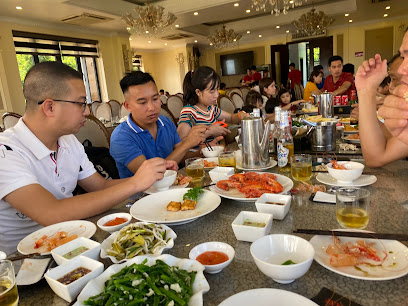
Papa's BBQ Restaurant
Experience authentic German cuisine at Papa's BBQ Restaurant in Ha Long - where flavor meets hospitality amidst stunning coastal views.
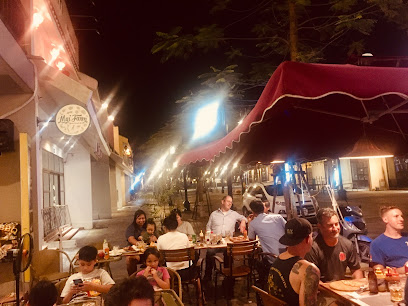
Nhà hàng Ngọc Lục Bảo - Nhà Hàng Hải Sản Quảng Ninh
Experience exquisite seafood dining at Nhà Hàng Ngọc Lục Bảo in Hạ Long—where fresh flavors meet fine dining ambiance.
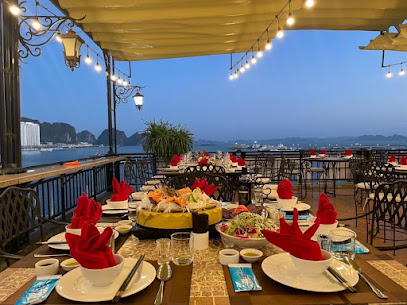
Nhà Hàng Linh Đan Halong
Experience authentic Vietnamese cuisine with stunning views at Nhà Hàng Linh Đan Halong - a culinary gem in Ha Long Bay.
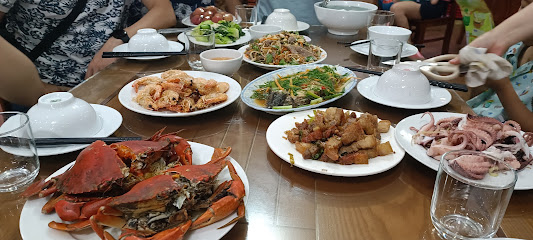
Indian master food restaurant Ha Long Bai chay
Savor authentic Indian flavors at Indian Master Food Restaurant in Ha Long - where culinary tradition meets vibrant culture.

Á Đông Restaurant
Discover a delightful fusion of Vietnamese, French, and Italian cuisines at Á Đông Restaurant in Hạ Long.
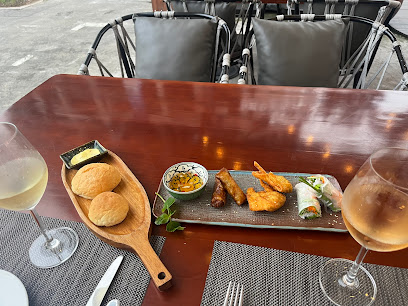
Vanakkam Indian Family Restaurant - Taste of india
Savor the essence of India at Vanakkam Indian Family Restaurant with authentic dishes in a warm family atmosphere.

RedCoral Halong Indian Halal Restaurant
Experience the best of Indian halal cuisine at RedCoral Halong – where rich flavors meet warm hospitality.
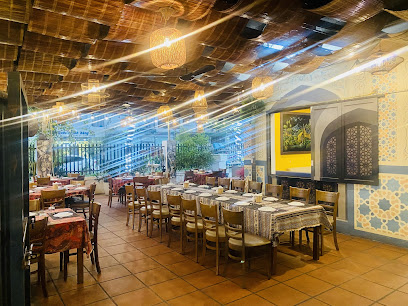
Soul Bowl at Citadines Marina Ha Long
Experience authentic Asian flavors at Soul Bowl in Citadines Marina Ha Long – where tradition meets modern dining in Vietnam.
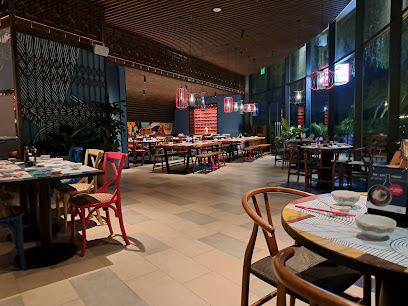
Wander Station & D'myna Restaurant
Discover the best Italian cuisine paired with exquisite cocktails at Wander Station & D'myna Restaurant in Ha Long, Vietnam.
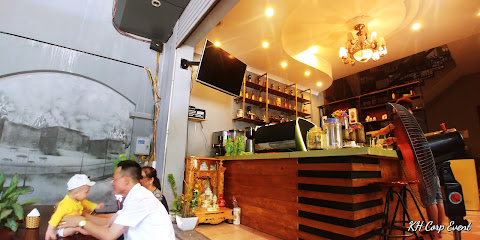
Nhà Hàng Hạ Long 1
Discover authentic Vietnamese cuisine at Nhà Hàng Hạ Long 1 in the heart of Quảng Ninh's stunning coastal city.
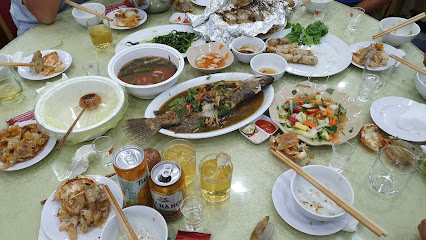
Măng Quán Restaurant
Experience authentic Vietnamese cuisine at Măng Quán Restaurant in Hạ Long—where every dish tells a story of flavor and tradition.
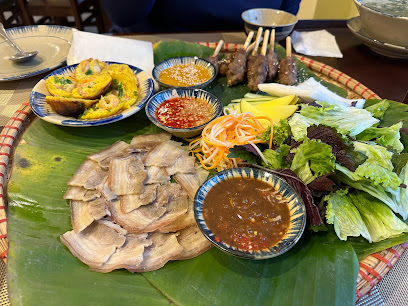
Nhà Hàng Hồi Chay
Discover the vibrant flavors of plant-based cuisine at Nhà Hàng Hồi Chay in Ha Long – where every dish tells a story of health and sustainability.
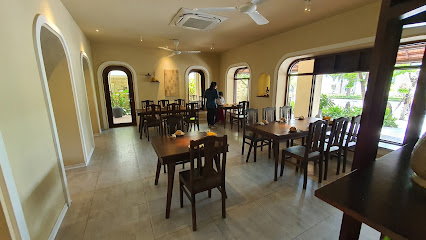
The ICON burger & ZEBRA bar
Discover gourmet burgers and vibrant nightlife at The ICON Burger & ZEBRA Bar in Ha Long—where taste meets atmosphere!
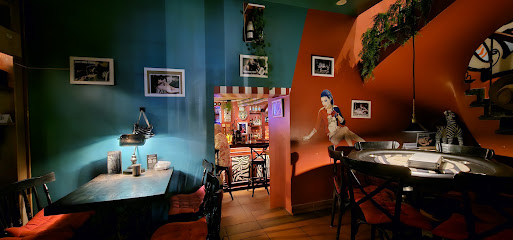
Loving Hut Chay Hoàng Kim 99 ( Vegan Restaurant )
Discover the rich flavors of vegan cuisine at Loving Hut Chay Hoàng Kim 99 in Hạ Long – where health meets taste in every delightful dish.
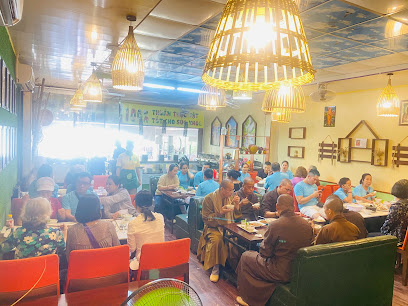
Markets, malls and hidden boutiques
GO! Hạ Long
Explore GO! Hạ Long, a vibrant hypermarket offering fresh local produce, international brands, and authentic Vietnamese delicacies in Hạ Long City.

Legend Pearl
Explore Vietnam's rich jewelry craftsmanship at Legend Pearl, Hạ Long's premier destination for exquisite artisan pieces.
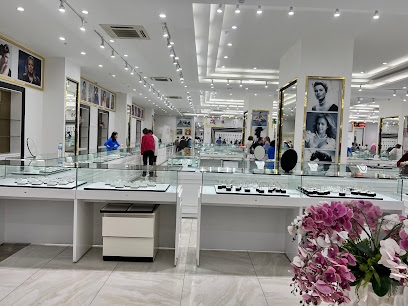
Vincom Plaza Hạ Long
Discover Vincom Plaza Hạ Long, your ultimate shopping destination in Quảng Ninh, offering a blend of retail, dining, and entertainment experiences.
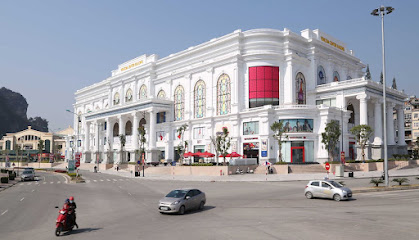
MM Mega Market Hạ Long
Discover MM Mega Market Hạ Long: the ultimate shopping destination in Quảng Ninh, offering a blend of local products, fresh produce, and delightful culinary experiences.
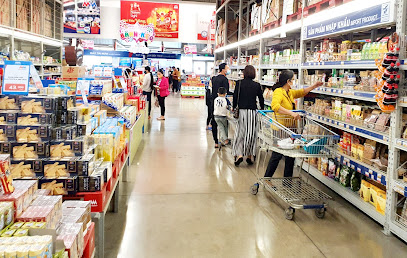
Halong Marine Plaza
Discover shopping and dining at Halong Marine Plaza, the ultimate outlet mall experience in Ha Long, Vietnam, surrounded by stunning coastal views.

Bamboo shop
Explore Bamboo Shop in Hạ Long for unique, eco-friendly souvenirs and local craftsmanship that captures the essence of Vietnam.

Giầy Dép Lucky Hạ Long
Discover a diverse range of footwear at Giầy Dép Lucky Hạ Long, where style meets affordability in the heart of Vietnam's coastal gem.
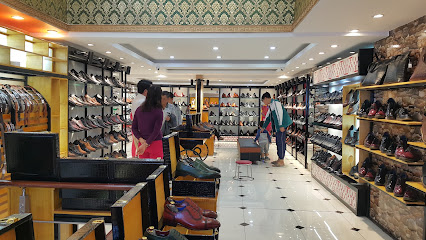
TOKYOLIFE Bãi Cháy
Explore the vibrant shopping scene at TOKYOLIFE Bãi Cháy, where unique fashion finds meet local culture in Hạ Long, Vietnam.
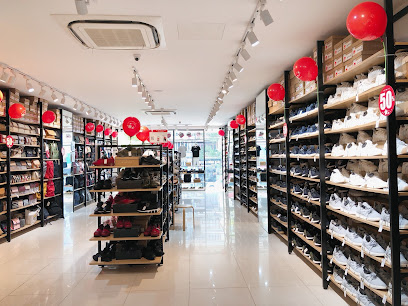
VÂU Tiệm Quần Áo Streetwear So Cute
Discover unique streetwear styles at VÂU Tiệm Quần Áo, a vibrant clothing store in Hạ Long, Vietnam, perfect for fashion enthusiasts.
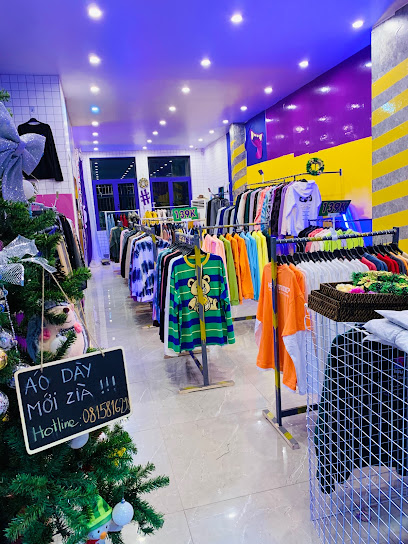
VJShop
Explore VJShop in Quảng Ninh for a wide selection of cameras and exceptional service to enhance your photography experience.

Cửa hàng kim khí Hồng Hải
Discover quality hardware and tools at Cửa Hàng Kim Khí Hồng Hải, the top warehouse store in Hạ Long, Vietnam, perfect for all your DIY needs.
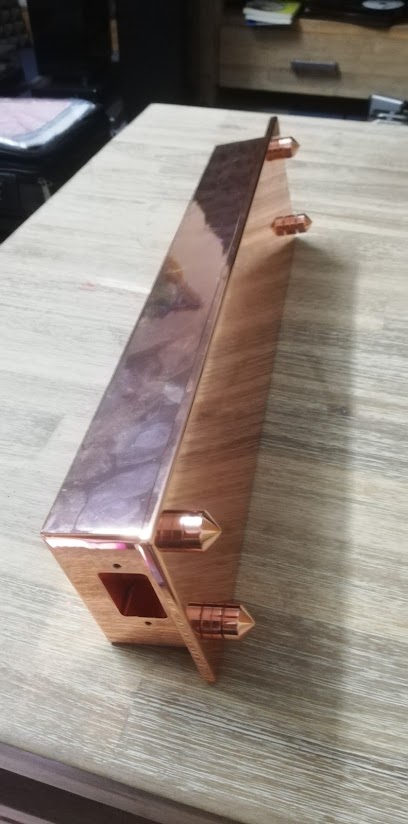
Viet Tien Fashion Shop
Explore the latest women's fashion at Viet Tien Fashion Shop in Ha Long, where style meets local culture and quality craftsmanship.
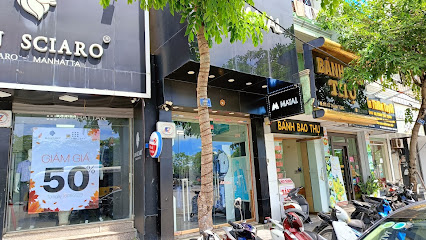
Shop Đồ Nhật Nội Địa Hạ Long - Shop Nhật Hạ Long Osaka
Immerse yourself in authentic Japanese products at Shop Đồ Nhật Nội Địa Hạ Long, where culture and quality meet.

Minh Long Ceramics - Quang Ninh
Minh Long Ceramics: A Cultural Journey Through Exquisite Vietnamese Chinaware in Quang Ninh.
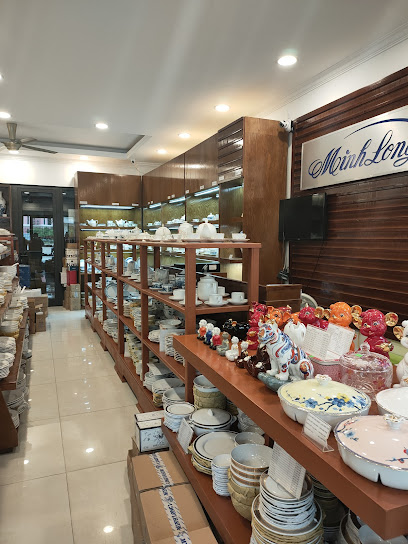
Văn phòng bán hàng Dự án La Emera Hạ Long
Discover convenience and local charm at the La Emera Project, your one-stop supermarket in Ha Long City, Vietnam.
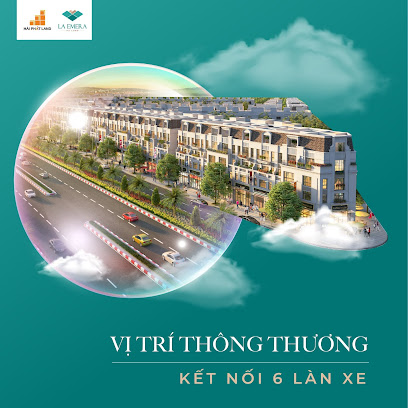
Essential bars & hidden hideouts
Valley Beach Club - beach
Discover the ultimate beachside retreat at Valley Beach Club in Ha Long, Vietnam, where relaxation meets vibrant nightlife.
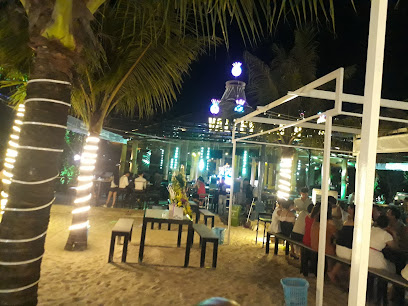
Chill Beach Bar - Hạ Long
Discover Chill Beach Bar in Hạ Long: your ultimate beachside escape for delightful cuisine and refreshing cocktails.
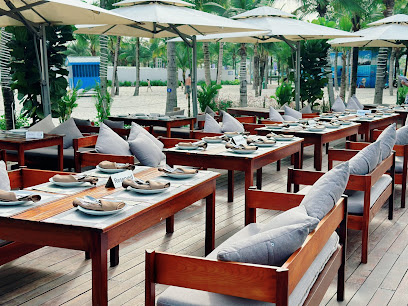
H Club
Experience the vibrant nightlife at H Club in Ha Long, Vietnam - the perfect spot for cocktails, stunning views, and unforgettable memories.
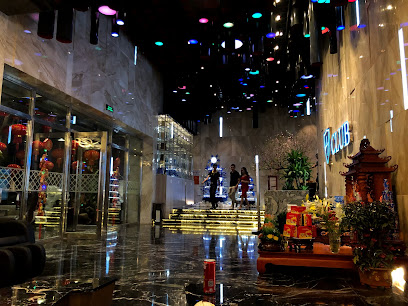
FOM Club Hạ Long
Experience the vibrant nightlife of Hạ Long at FOM Club, where exquisite drinks and energetic vibes await you in a stunning coastal setting.
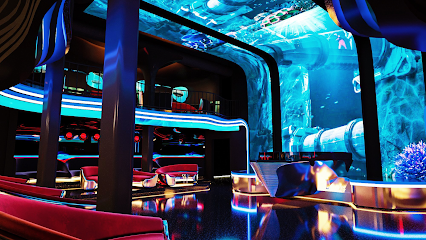
On The Rocks at Citadines Marina Halong
Discover On The Rocks at Citadines Marina Halong: A rooftop bar with stunning bay views, exquisite cocktails, and delicious tapas for an unforgettable evening.

45A PUB Coffee Bar
Discover the lively 45A PUB Coffee Bar in Ha Long City, where live music and local flavors create an unforgettable experience.
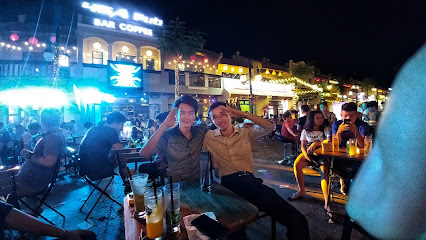
Sky21 Bar & Lounge
Experience the breathtaking views and vibrant nightlife at Sky21 Bar & Lounge, a rooftop gem in Ha Long, Vietnam's stunning bay.
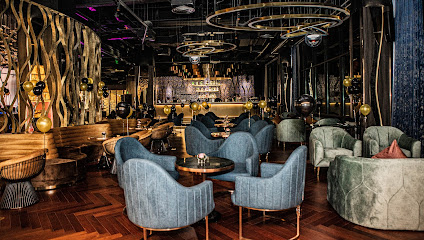
Hush, beach bar
Discover the tranquility and beauty of Hush Beach Bar, the perfect seaside retreat in Ha Long Bay, Vietnam.
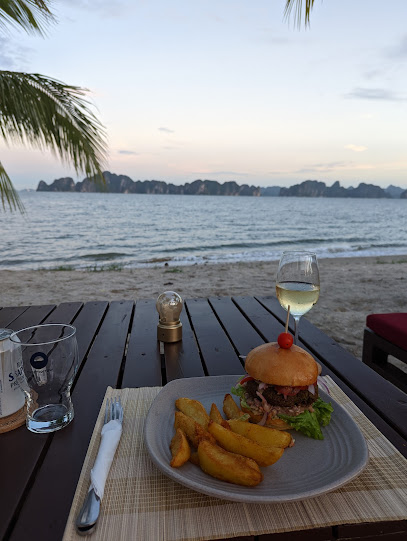
NEW SQUARE Bar
Discover the vibrant nightlife of Hạ Long at NEW SQUARE Bar, where live music meets a lively atmosphere for an unforgettable experience.

Love Drunkery Cocktail Bar
Discover the nightlife of Ha Long at Love Drunkery Cocktail Bar, where exquisite cocktails meet stunning skyline views in a vibrant atmosphere.

Sport Coffee & Bar
Experience the thrill of sports in the lively ambiance of Sport Coffee & Bar in Ha Long City, where delicious food and drinks await.
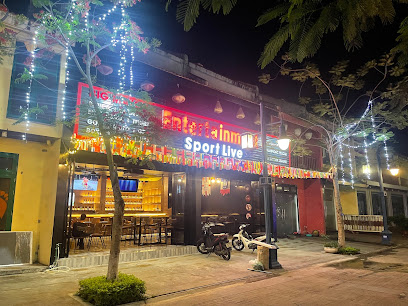
The Room Mixology
Explore the exquisite world of wines at The Room Mixology, a premier wine bar in Hạ Long, Vietnam, offering a cozy atmosphere and expert selections.

Miami Lounge
Experience the vibrant nightlife of Ha Long at Miami Lounge, where tropical vibes and delightful cocktails await every visitor.

UP@DJV
Experience the best of Hạ Long City's vibrant dining scene at UP@DJV, where grilled delicacies and innovative cocktails await.
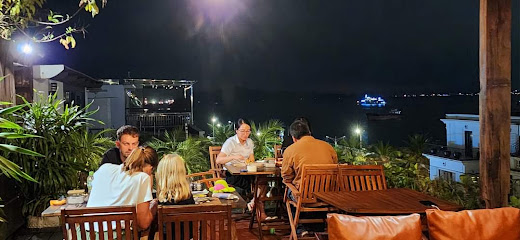
Lin Lounge
Experience the vibrant nightlife at Lin Lounge, a premier bar in Hạ Long offering a diverse selection of drinks and a lively atmosphere for all.

Local Phrases about Ha Long Bay
-
- HelloXin chào
[sin chow] - GoodbyeTạm biệt
[tam byet] - YesCó
[kaw] - NoKhông
[kohng] - Please/You're welcomeXin vui lòng
[sin vui long] - Thank youCám ơn
[kahm uhn] - Excuse me/SorryXin lỗi
[sin loy] - How are you?Bạn khỏe không?
[bahn kweh kohng] - Fine. And you?Khỏe. Còn bạn?
[kweh. kawn bahn] - Do you speak English?Bạn có nói tiếng Anh không?
[bahn kaw noy tyeng ang kohng] - I don't understandTôi không hiểu
[toy kohng hyew]
- HelloXin chào
-
- I'd like to see the menu, pleaseTôi muốn xem menu, xin vui lòng
[toy mown sem menu, sin vui long] - I don't eat meatTôi không ăn thịt
[toy kohng an tit] - Cheers!Chúc sức khỏe!
[chuk sook kweh] - I would like to pay, pleaseTôi muốn thanh toán, xin vui lòng
[toy mown thanh toan, sin vui long]
- I'd like to see the menu, pleaseTôi muốn xem menu, xin vui lòng
-
- Help!Cứu!
[kyoo] - Go away!Đi xa!
[dee sa] - Call the Police!Gọi cảnh sát!
[goy kang saht] - Call a doctor!Gọi bác sĩ!
[goy bahk see] - I'm lostTôi lạc đường
[toy lak doong] - I'm illTôi ốm
[toy ohm]
- Help!Cứu!
-
- I'd like to buy...Tôi muốn mua...
[toy mown mwa] - I'm just lookingTôi chỉ xem thôi
[toy chee sem toy] - How much is it?Cái này bao nhiêu tiền?
[kai nye bao nyew tyen] - That's too expensiveĐắt quá
[dat kwa] - Can you lower the price?Bạn có thể giảm giá không?
[bahn kaw te zam zah kohng]
- I'd like to buy...Tôi muốn mua...
-
- What time is it?Bây giờ là mấy giờ?
[bay zaw la may zaw] - It's one o'clockMột giờ
[moht zaw] - Half past (10)Mười giờ rưỡi
[mooee zaw rooy] - MorningBuổi sáng
[bwoy sang] - AfternoonBuổi chiều
[bwoy chee-ew] - EveningBuổi tối
[bwoy toy] - YesterdayHôm qua
[home kwah] - TodayHôm nay
[home nai] - TomorrowNgày mai
[nyai mai] - 1Một
[moh-t] - 2Hai
[hai] - 3Ba
[ba] - 4Bốn
[bawn] - 5Năm
[nahm] - 6Sáu
[sow] - 7Bảy
[by] - 8Tám
[tam] - 9Chín
[cheen] - 10Mười
[mooee]
- What time is it?Bây giờ là mấy giờ?
-
- Where's a/the...?Cái...ở đâu?
[kai uh dah-oo] - What's the address?Địa chỉ là gì?
[dee-a chee la zee] - Can you show me (on the map)?Bạn có thể chỉ cho tôi (trên bản đồ) không?
[bahn kaw te chee chaw toy trern barng doh kohng] - When's the next (bus)?Xe buýt tiếp theo khi nào?
[shee but tyep theh-oh kee now] - A ticket (to ....)Một vé (đến ....)
[moht vay den]
- Where's a/the...?Cái...ở đâu?
History of Ha Long Bay
-
Ha Long Bay, located in northeastern Vietnam, is a UNESCO World Heritage Site known for its emerald waters and thousands of towering limestone islands topped with rainforests. The bay's geological formation dates back around 500 million years, influenced by cycles of sea-level changes and tectonic activity. The karst landscape, with its stunning caves and grottoes, has evolved over millions of years, making it one of the most visually striking natural wonders in the world.
-
Archaeological evidence suggests that Ha Long Bay was inhabited by ancient communities as early as 18,000 BC. The Soi Nhu culture, dating from 18,000 to 7,000 BC, and the Cai Beo culture, from around 7,000 to 5,000 BC, are among the earliest known cultures to have existed in this region. Artifacts such as stone tools, pottery, and shellfish remains have been discovered, indicating a thriving prehistoric community.
-
The name 'Ha Long' translates to 'Descending Dragon,' rooted in an ancient Vietnamese legend. According to the myth, the Jade Emperor sent a family of dragons to protect Vietnam from invaders. The dragons descended upon the bay, spitting out jewels and jade, which transformed into the islands and islets that dot the waters today. This divine intervention created a natural fortress that helped the Vietnamese people defend their land.
-
Ha Long Bay has been the site of several significant historical battles. One notable event is the Battle of Bach Dang in 1288, where the Vietnamese military leader Tran Hung Dao defeated the invading Mongol fleet using strategic placements of steel-tipped wooden stakes in the riverbed during low tide. This victory marked a crucial point in Vietnamese resistance against Mongol invasions and is celebrated as a symbol of national pride and ingenuity.
-
During the French colonial period in the late 19th and early 20th centuries, Ha Long Bay became a popular retreat for French administrators and wealthy Vietnamese. The French influence is still evident in some of the architecture in the nearby city of Ha Long. The bay's natural beauty was captured in numerous paintings and photographs, further cementing its status as a treasured landscape.
-
In 1994, Ha Long Bay was designated as a UNESCO World Heritage Site, recognizing its exceptional natural beauty and geological significance. This designation has helped to protect the area and promote sustainable tourism, ensuring that the bay's unique landscape and rich history are preserved for future generations to enjoy. The recognition has also brought international attention to the importance of conserving marine and coastal environments.
-
Ha Long Bay is not only a natural wonder but also a cultural treasure. The bay is home to floating fishing villages where communities have lived for generations, relying on the waters for their livelihood. Traditional practices, such as fish farming and pearl cultivation, continue to thrive. Visitors can explore these villages to gain insight into the unique way of life that has developed in harmony with the bay's natural environment.
Ha Long Bay Essentials
-
Ha Long Bay is located in Quang Ninh Province, about 170 kilometers east of Hanoi. The most common way to reach Ha Long Bay is by road. You can take a bus or a private car from Hanoi, which typically takes around 3.5 to 4 hours. Several tour operators offer shuttle bus services directly to Ha Long Bay. Alternatively, you can take a seaplane from Hanoi, which offers a scenic aerial view of the bay and takes approximately 45 minutes. There is also a domestic airport, Van Don International Airport, located about 50 kilometers from Ha Long Bay, which offers flights from various cities in Vietnam.
-
Within Ha Long Bay, the primary mode of transportation is by boat, as the bay is renowned for its limestone karsts and islets. Various types of boats are available, including traditional wooden junks, modern cruise ships, and smaller speedboats. On land, taxis and motorbike taxis are common in Ha Long City. For a more flexible experience, you can rent a bicycle or motorbike to explore the surrounding areas. Local buses also operate within the city, connecting different parts of Ha Long City and nearby towns.
-
The official currency in Vietnam is the Vietnamese Dong (VND). Major hotels, restaurants, and shops in Ha Long Bay accept credit cards, but it is advisable to carry cash, especially for smaller establishments and local markets. ATMs are widely available in Ha Long City, but it is a good idea to withdraw sufficient cash before heading out on boat tours or visiting more remote areas within the bay.
-
Ha Long Bay is generally a safe destination for tourists. However, it is advisable to take standard precautions. Avoid walking alone at night in unfamiliar areas and keep an eye on your belongings in crowded places. While Ha Long Bay itself does not have high-crime areas targeting tourists, Ha Long City, like any urban area, requires vigilance. Be cautious of scams, such as overcharging for boat tours or services. Always use reputable tour operators and confirm prices beforehand.
-
In case of emergency, dial 113 for police assistance, 114 for fire emergencies, and 115 for medical emergencies. Ha Long City has several hospitals and clinics where you can seek medical attention. It is recommended to have travel insurance that covers medical emergencies. For minor health issues, pharmacies are available throughout Ha Long City where you can purchase over-the-counter medications.
-
Fashion: Do dress modestly, especially when visiting temples or pagodas. Avoid wearing revealing clothing. Religion: Do respect local customs and traditions. Remove your shoes when entering religious sites. Public Transport: Do be respectful and give up your seat to elderly passengers. Don't eat or drink on public transport. Greetings: Do greet people with a slight bow or a nod. A handshake is also acceptable. Eating & Drinking: Do try local seafood delicacies and accept food offerings graciously. Don't refuse hospitality, as it is considered impolite.
-
To experience Ha Long Bay like a local, visit the local markets, such as Ha Long Market and Bai Chay Market, where you can buy fresh seafood and traditional Vietnamese goods. Engage with locals, as they are often friendly and willing to share stories about the bay's history and culture. Don't miss visiting the floating fishing villages, where you can learn about the traditional way of life on the water. For a unique experience, take a kayak or bamboo boat tour to explore the hidden caves and lagoons within the bay.
Nearby Cities to Ha Long Bay
-
Things To Do in Hanoi
-
Things To Do in Sapa
-
Things To Do in Xieng Khouang
-
Things To Do in Phonsavan
-
Things To Do in Thakhek
-
Things To Do in Hue
-
Things To Do in Luang Prabang
-
Things To Do in Vang Vieng
-
Things To Do in Savannakhet
-
Things To Do in Da Nang
-
Things To Do in Hoi An
-
Things To Do in Vientiane
-
Things To Do in Udon Thani
-
Things To Do in Tam Ky
-
Things To Do in Muang Sing












